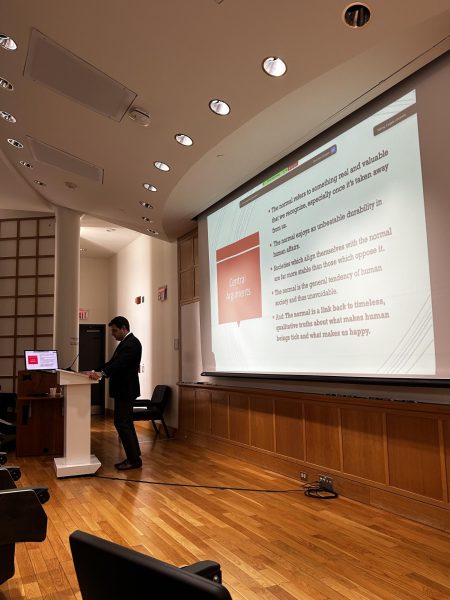Ak?cam Explores Armenian Genocide
Professor Taner Ak?cam delivered his lecture “Armenian Genocide and the Turkish Record” and premiered his new book A Shameful Act: The Armenian Genocide and the Question of Turkish Responsibility on Monday to a packed Ho Lecture Room.
Recently, Ak?cam’s new book sent him deep into Turkish documents in the Prime Ministerial Archive in Istanbul, researching Ottoman documentation of the relocations, deportations and killings that took place from 1914 through 1916.
His rationale for examining these documents stems from the controversy that surrounds those events. There are two camps of scholars who research the Armenian genocide, Ak?cam said.
One relies only on Turkish documents and maintains that the widespread murder of Armenians was an unexpected result of relocation efforts that were not specific to that ethnic group. The other claims that Western documentation is the only reliable source of information on the intentions of the Turkish government during that period.
“The common logic underlying both of these positions is that both sets of documents are mutually exclusive,” Ak?cam said. “I would argue that both [camps] are missing the point.”
Ak?cam went on to explain eight points that he learned from the Ottoman documents.
First, he found documents from spring 1914 explicitly articulating the intent of using special paramilitary units to make Turkey homogenous.
Second, he found four plans for the achievement of this goal. This was an important find because some say that there was no preconceived plan that caused the events.
Third, he discovered demographic maps the Turkish government had ordered religious leaders to assemble for their regions. The first maps focused on religion, but maps created immediately before the relocations compiled social information such as education, language and inter-group relations.
Fourth, there were documents from 1914 and 1915 ordering that all Armenian and Christian names be changed to Turkish names, whether of individuals or landmarks.
Fifth, Ak?cam discovered documentary evidence that in certain regions, non-Muslims were vacated and Muslims were resettled there within a week, showing a great deal of organization and planning.
Sixth, documents exist stating that relocations were specifically engineered to separate Kurds from their leaders and from each other in order to “make Kurds forget their ethnic and cultural identity.”
Seventh, he found documents that may explain the “second genocide” in the Zor region in 1916: the population of Armenians in Zor had exceeded the government-proscribed limit of five to ten percent of the total original population.
Eighth, Armenians were treated more harshly based on official policy: Armenian children were forcibly transferred to Muslim families or orphanages; Armenians were not allowed to remain in their homes even if they converted to Islam; there were Armenian deportations from Istanbul; and Armenians were not compensated for property the government confiscated.
Ak?cam was editor of a student newspaper in Turkey in the 1970s, and was imprisoned for publishing opinions that recognized the existence of Kurds.
He escaped prison by tunneling underground and making his way to Germany, where he obtained political asylum with the help of Amnesty International.
Since then, he has taught at the University of Michigan and the University of Minnesota, where he currently teaches.
“Ak?cam was the first Turkish scholar to break down the wall of silence on this issue,” Donald M. and Constance H. Rebar Professor of the Humanities and Professor of English Peter Balakian said.
Ak?cam said that there is a great deal more to be done in the way of researching the Armenian genocide.
“We need more local research,” he said. “We have sort of a macro picture, but we need to know what happened in local regions.”




